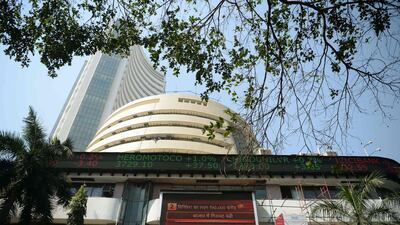India has much to learn from the opening of China's onshore bond market.
Last year, Beijing allowed overseas investors to access local-currency securities via its so-called Bond Connect. On Friday, Bloomberg LP announced the inclusion of Chinese government and policy-bank debt in the Bloomberg Barclays Global Aggregate Index.
Over a 20-month period starting in April next year, as many as 386 bonds will enter the $53.73 trillion benchmark, giving China a weight of 5.49 per cent at full inclusion. Yuan-denominated notes will end up with the fourth-largest presence, after those in US dollars, euros and yen.
Contrast this with India, which has been on a path of gradual debt-market globalisation for more than two decades. Yet by limiting foreign participation to 5 per cent, authorities have crimped the prospects of India's admittance to global gauges compiled by JP Morgan and Bloomberg.
This is an odd policy choice. China has more than ample domestic savings to power its economy, but it wants to share credit risk meaningfully with foreigners. India, meanwhile, runs a current account deficit, implying a perennial reliance on overseas savings. So why doesn't the central bank allow more borrowing in domestic currency, which it can freely print, rather than cling to riskier dollar inflows?
It isn't an idle query. The country's basic balance of payments - the sum of the current account deficit and net foreign direct investment - has turned negative. This is when crude oil, which India needs to import, is at only $66 a barrel. Should oil prices firm further, and foreign portfolio investment in stocks and bonds ebb, the rupee would need to weaken to make Indian assets attractive again.
While currency values can and do adjust relatively freely in developed economies, excessive exchange-rate volatility in emerging markets tends to lead to a hard choice between capital controls and high local interest rates. That's what happened during the destabilising taper-tantrum episode of 2013.
_______________
Read more:
Investors dump Indian bonds on concerns over banking regulations, weakening rupee
India's millennial millionaire class hot favourite among asset managers
_______________
This time around, the Reserve Bank of India (RBI) is buying dollars to make sure the rupee doesn't strengthen to a point where investors lose confidence in its value. But foreign money has already started leaving the Indian bond market; in the face of rising US interest rates, especially a surging dollar Libor, India needs a new category of bond buyers. That's where aiming for index inclusion could help.
Sovereign credit rating is the one benchmark Indian authorities obsess over endlessly. Indexes - both equity and debt - don't get as much attention. The disregard that local stock exchanges demonstrated for India's 9 per cent weight in MSCI's emerging-market gauge when they came together to ban index providers from supplying local securities data to foreign bourses is reflective of that cavalier mindset. A comparison with China, which courted MSCI until it won a place for yuan-denominated stocks in the measure, is once again instructive.
The difference is starker in debt. Nomura has estimated that a 1 percentage point increase in the limit on foreign participation would lead to 800bn rupees (Dh45.17bn) of inflows. What's more, becoming a part of an index would mean access to a certain assured sum from funds merely looking to replicate the benchmark. The risk of so-called "sudden stops" would be lower.
“Masala” bonds, or rupee-denominated credit offshore, are only viable for large, mostly state-linked Indian issuers. Where will single-B rated borrowers go? The RBI won't let them offer high interest rates even on rupee notes in international markets; the onshore debt market is already in trouble because of a 1 percentage point jump in 10-year sovereign bond yields since July.
Over the past several years, the world's attention has been focused on China's excessive credit build-up. But the number of steps Beijing has taken to prevent an accident - from shuttering excess capacity in steel and aluminium and stopping a one-way bet on yuan appreciation to squeezing easy liquidity and going after sales of wealth management products masked as insurance - have all helped maintain a semblance of calm.
Underneath, there still are fault lines, for instance in rapid growth of consumer credit. But the mess in India's banking system, hobbled by more than $200bn in stressed assets, is many times more pressing than any challenge facing China.
One of the solutions for making banks healthy in the long run would be to let active, deep onshore bond markets put a price on credit risk. The price tag need not be prohibitive, provided India drops its historical aversion to being in debt to foreigners. Mimicking China's playbook on index inclusion would be a good starting point.
Bloomberg

